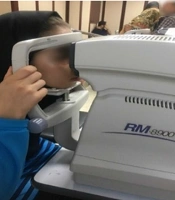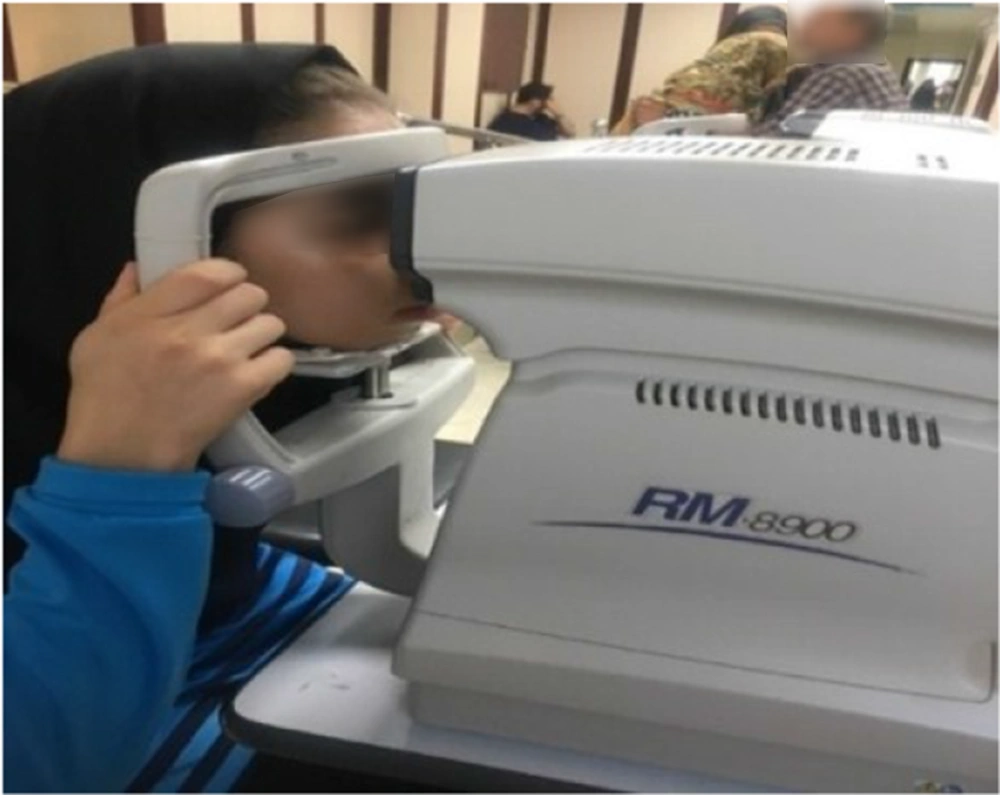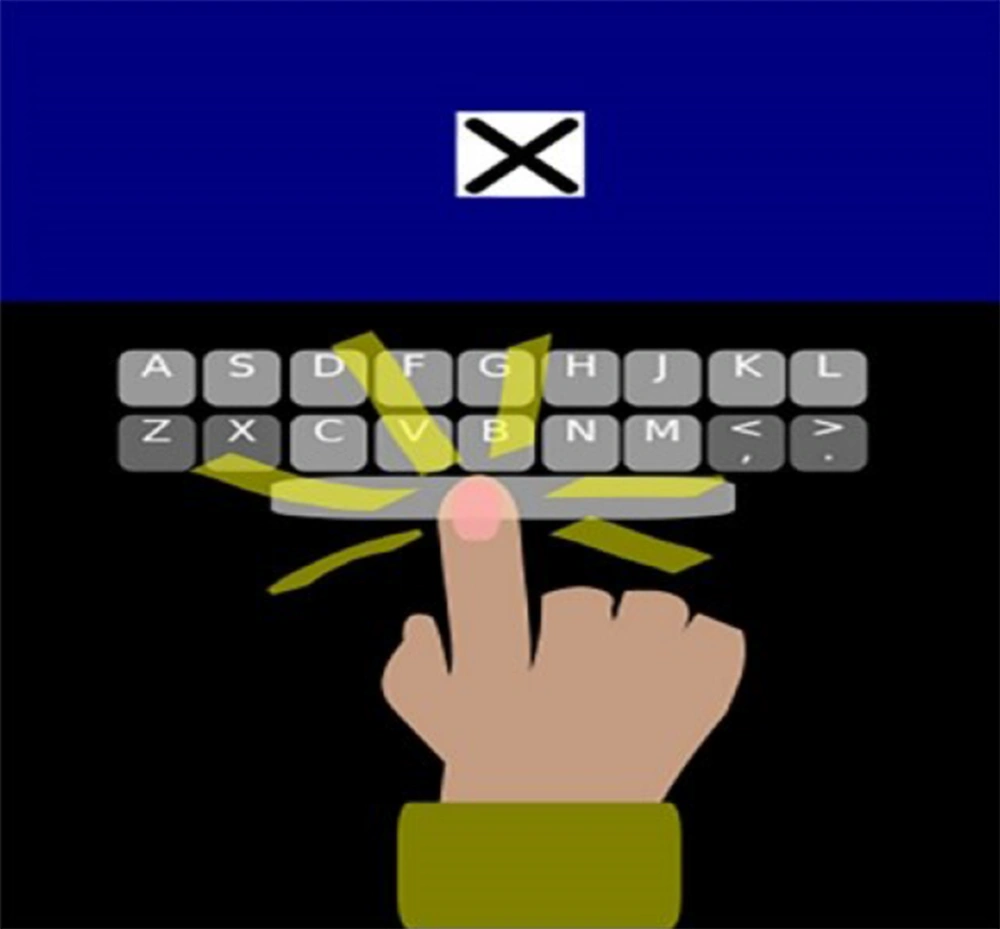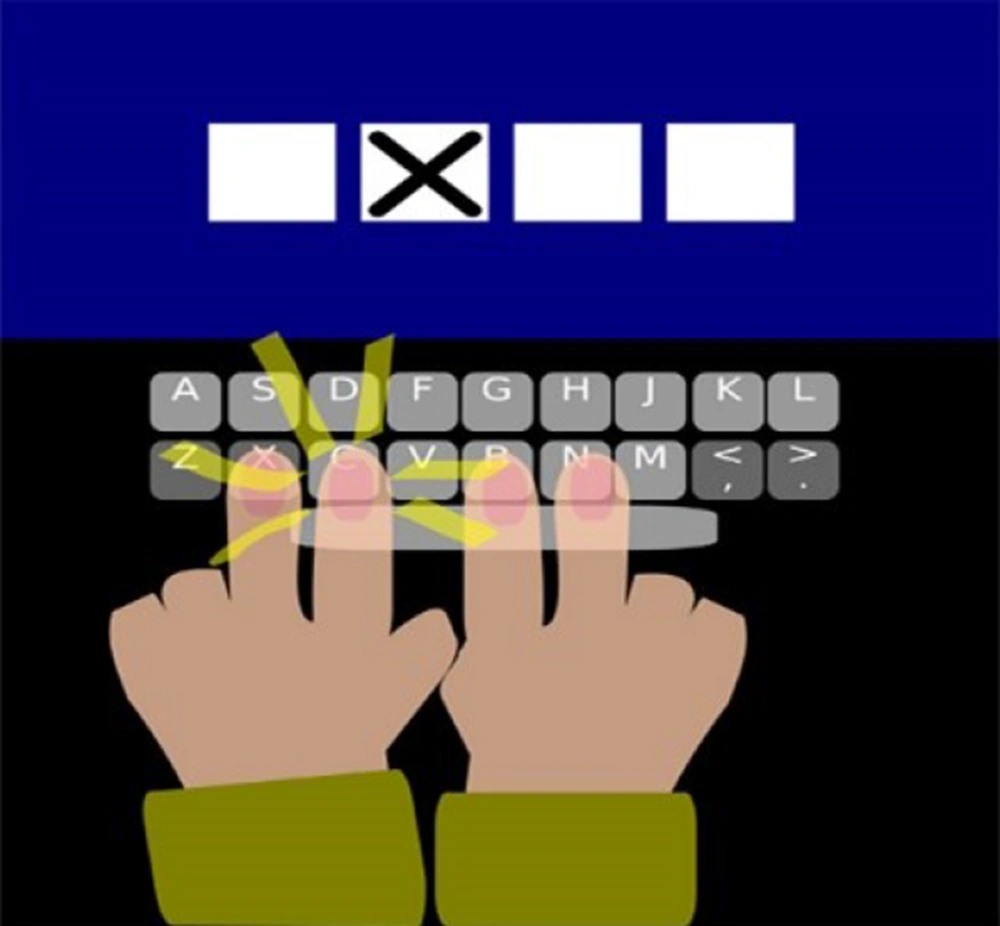1. Background
An ability is a characteristic that underlies particular skills and is largely inherited genetically. On the other hand, researchers who study individual differences believe that motor abilities are infra-situational. This means that one ability may play a key role in several skills or have no role in that skill (1).
Thus, identifying and evaluating specific motor abilities can provide insights into possible causes for a person's difficulty in performing or learning motor skills. Therefore, understanding and studying these abilities and how they are related to the implementation of motor skills has been considered an important issue in previous decades. One of the successful pioneers in the development of the classification of motor skills was Fleishman (1972). He identifies nine physical proficiency abilities (Fleishman, 1964) and 11 psychomotor abilities (Fleishman, 1966) that were shown to be the most useful and meaningful in describing performance across a wide variety of tasks. The psychomotor abilities were control precision, multi-limb coordination, response orientation, reaction time, speed of arm movement, rate control, manual dexterity, finger dexterity, arm-hand steadiness, wrist-finger speed, and aiming (2).
The vision system is our most comprehensive source of information about the world we live in (3). Undoubtedly, as a result, the role of this information in motor control is critical (4, 5). Vision plays many roles in controlling coordinated movement through the interaction between visual perception and proprioception (2), even if other sensory systems provide more useful information for proper behavior (6). In this way, athletes can focus on the type of task or motor skill. And not be easily distracted by unrelated parts or information in the environment, including surrounding players, spectators, or unrelated colors (5). Galan, a Roman physician who believed in a connection between ball sports, body, and visual status in the second century, was the first adherent of this concept [cited in (7)]. Vision in sports provides the ability to interpret environmental information, body alignment, response to stimuli, and anticipation (8). Elite sports require that athletes show the highest possible level of reaction to stimuli in both the central and peripheral (left and right) fields of vision because selecting key information about the opponent's movements is only efficient if the athlete observes the opponent's entire body and its surroundings (8, 9). In fact, one of the main differences between champions, novices, and non-players is that sensory, motor, and perceptual conditions in champions are more efficient (10). Thus, it seems that people with more experience in an activity visually searched their environment and located essential information more effectively and efficiently than people with little experience. Therefore, we know that as people become more experienced and skilled in an activity, they acquire better visual search skills.
Experience alone is the key factor in the acquisition of effective visual search strategies. On the other hand, performing motor and sports skills requires a combination of perception and action, or in other words, coordination of vision and movement (3). Central and peripheral vision also play different roles in locomotion. For example, research has shown that when we walk along a pathway, central vision provides information that guides us so that we can stay on the pathway, whereas peripheral vision is important to provide and update our knowledge about the spatial features of the walking environment, such as pathway drop-offs or bumps (11).
Table tennis is characterized by perceptual uncertainty and time constraints. As a dynamic sport, it involves a constantly changing visual environment. To respond to such a variable stimulus, the player must be able to acquire superior visual information about the approaching object. As a result, hitting the ball requires constant eye convergence, estimating the speed of the ball, and anticipating its direction, which moves quickly in space with no special clue. Furthermore, when attempting to intercept an approaching object, players must contend with the time latency necessary to change motor commands based on sensory visual information (12). It is, therefore important to be functioning at advanced levels because a player's performance can be one of the most demanding tasks for the visual system (13). Given inconclusive results of previous research and lack of consideration for the relationship between the visual field and motor abilities, we aim to determine the extent of this relationship in the current study to use the results in creating elites and organizing their exercises. Despite the high accuracy and reliability of the perimeter device, few studies so far have utilized this tool to measure the visual field.
2. Objectives
This study aimed to determine the relationship between simple and choice reaction time and eye-hand coordination with the visual field of elite table tennis players.
3. Methods
3.1. Methodology
This correlational study is cross-sectional and applicable.
3.2. Participants
The statistical population of this study included elite female table tennis players. Participants consisted of 10 female elite table tennis players who were members of the Iranian national team in the 18th Asian games, Jakarta (2018), with a mean age of 19.77 ± 5.711 years. They had six years of experience playing for the national team, on average. They were selected through the convenience sampling method.
3.3. Tools and Measurements
In order to collect information on age, history of sports activity, and physical health, a personal information form was used. The visual field examination was done by a specialist using the Zeiss Humphrey 740 perimeter at the Basir ophthalmology center. Each subject's simple and choice reaction time was screened by the Deary et al. (14) reaction time test, and to measure eye-hand coordination, the manual test of alternate-hand wall toss was used.
3.4. Procedure
The visual field examination was done by a specialist using the Zeiss Humphrey 740 perimeter. The participant was positioned facing the white concave dome of the perimeter while keeping a bottom, and the eye that was not being examined was covered. The computer randomly illuminates points of light around the bowl-shaped perimeter. All participants were told to keep looking at the target point and press the button whenever they saw a light, no matter how bright or dim (15). The right eye was examined first, followed by the left eye after a few minutes of rest (Figure 1). The average test time for each participant was 20 minutes. A surgeon and an ophthalmologist analyzed the findings.
Then, to evaluate each subject's simple and choice reaction time, the reaction time test was used through the Deary, Liewald, and Nissan software. First, they all had a practice session. Participants were asked to click a key in response to a stimulus for simple reaction time (Figure 2). For choice reaction time, there were four stimuli, and participants had to press the key corresponding to the particular stimuli (Figure 3). They had to wait before a black cross appeared on the white square in a simple reaction time test. When that happens, they should click the space bar as quickly as they can. They must wait until they see a black cross on one of the four white squares in the choice reaction time test (e.g., there are four different back cross positions, which count as four different stimuli). When that happens, they should click the corresponding key (z, x, or ,). Five practice trials, thirty test trials for simple reaction, and 60 test trials for the choice reaction were taken.
In order to measure eye-hand coordination, the manual test of alternate-hand wall toss was used. Participants were given thirty seconds to throw a ball against a solid wall target with one hand in an underarm movement and catch the ball correctly with the other hand as many times as possible. The distance to the wall was two meters, and the type of ball used in the test was a tennis ball. Participants were familiarized with the test during the ten-second training phase, followed by the testing phase included three sets of thirty seconds’ work. The highest number of correctly caught balls in thirty seconds of three attempts was reported as the final result during the testing phase. The Table 1 lists general ratings for the wall toss test based on the score of the number in thirty seconds (12, 16).
| Rank | Score in 30 Seconds |
|---|---|
| Excellent | More than 35 |
| Good | 30 - 35 |
| Average | 20 - 29 |
| Weak | 15 - 19 |
| Very weak | Less than 15 |
Scoring of of Eye-Hand Coordination Test
3.5. Ethical Considerations
This research was conducted under the supervision of Alzahra University and the Table Tennis Federation of the Islamic Republic of Iran. The researchers assured the national team athletes that their information would be kept confidential. All of the participants had signed the consent form after they had been informed about the purpose of the study. They were evaluated for any systemic and visual problems. Also, they were asked about any history of medication.
3.6. Statistical Analysis
In order to analyze the data, descriptive statistical methods were used to calculate the central tendency and measures of dispersion. Initially, the Shapiro-Wilk test was used to confirm data normality. To verify the correlation between the variables of the study, all data were analyzed using the software package SPSS Statistics 25.0.
4. Results
Mean, and standard deviation of visual components are presented in Table 2.
| Statistical Analysis | Age | Visual Field Indicator of the Right Eye | Visual Field Indicator of the Left Eye |
|---|---|---|---|
| Mean ± SD | 19.7 ± 5.96 | 99 ± 2.14 | 99.5 ± 0.76 |
Descriptive Statistics Related to Visual Factors
Based on the results of Pearson’s correlation shown in Table 3; there was no significant correlation between simple and choice reaction time with peripheral vision of the right eye, (r (10) = -0.012, P = 0.74 and the left eye, (r (10) = -0.29, P = 0.42).
| Variables | Simple Reaction Time | Choice Reaction Time | ||
|---|---|---|---|---|
| Pearson Correlation | Sig. | Pearson Correlation | Sig. | |
| Peripheral vision of the right eye | -0.12 | 0.74 | -0.03 | 0.94 |
| Peripheral vision of the left eye | -0.29 | 0.42 | -0.06 | 0.87 |
Pearson’s Correlation Between Simple and Choice Reaction Time with Visual Field
According to the correlation analyses shown in Table 4; there was no significant correlation between eye-hand coordination and peripheral vision of the right eye [r (10) = -0.49, P = 0.15], and the left eye, [r (10) = -0.49, P = 0.15].
| Variables | Eye-Hand Coordination (Pearson Correlation) | Sig. |
|---|---|---|
| Peripheral vision of the right eye | -0.49 | 0.15 |
| Peripheral vision of the left eye | -0.49 | 0.15 |
Pearson Correlation Between Eye-Hand Coordination and Peripheral Vision
5. Discussion
This study aimed to investigate the relationship between simple reaction time, choice reaction time, and eye-hand coordination with peripheral vision in elite female table tennis players. The findings of the current study showed that there is no significant relationship between simple and choice reaction time with peripheral vision of the right and left eyes. Moreover, there was no significant correlation between eye-hand coordination and peripheral vision of the right and left eyes.
These results are aligned with Abernethy's research which showed experts do not need a lot of environmental information to make decisions because these people basically see more when they search for something. Undoubtedly, to some extent, due to their visual exploration and higher decision-making capabilities, they can use visual information better (17). On the other hand, similar results were obtained by Sillero Quintana et al. (18). They have claimed that skilled basketball players have much more advanced environmental vision than nonathletes. They have even equalized the age differences between the two groups of subjects and again observed no significant difference. Moreover, the results of Ghasemi et al.'s research showed that expert soccer referees were superior in all visual skills (19).
In the research done by Ando et al. (20) six soccer players and six nonathletes had their visual reaction time assessed by presenting three different sizes of stimuli to the central and peripheral fields of vision. Soccer players had shorter premotor times than nonathletes. Suggesting that players in peripheral, as well as central positions, are more able to react rapidly to a stimulus. In another study, the acute, short-duration exercise of varying intensities was shown to affect simple and choice reaction times (21). Also, in a study by Lenoir and Mazyn (22), the role of visual information in the control of a skill involving rotation was investigated, which comes to the conclusion that throwing performance was usually inferior when only central vision was available as compared to the full and peripheral vision conditions.
Fouladisn et al. (16), in their study, compared the selected visual skills of athletes and nonathletes in selected sports; table tennis, badminton, tennis, football, handball, and darts, martial. The results indicated that there is a significant difference between the mean components of static visual acuity, depth perception, NPC, near point adaptation, contrast sensitivity, central and peripheral awareness in such a way that athletes were better than nonathletes in all visual components. This results show the effect of exercise training experience on visual skills. In other words, according to the nature of table tennis skills and its visual demands and considering the fact that the participants of the current study were all elites, it can be said that visual characteristics are acquired after many years of skill implementation experience, and these features are more a function of experience than visual acuity (3). Alternatively, according to Ericsson (23), experts recall all the early stages of learning in a much more sophisticated way than beginners in order to make the most of cognitive processes to have the capacity to adapt the performance to a wide range of situations.
Mallahi et al. (24) investigated the impact of an 8-week visual and sport skills training program on chosen visual and sport skills in novice table tennis and basketball players. The visual and table tennis group had better performance in comparison with the visual and basketball group. It seems that the combination of visual and sport skills training is better than exclusive sport and visual training. Some studies also demonstrated that peripheral vision function and eye-hand coordination were significantly better in rocket sports compared with non-rocket sports (13, 16) or athletes compared with nonathletes (25, 26). Regarding the fact that all of the participants in this study were elites, and had good eye-hand coordination, the relationship between the peripheral vision of both eyes and eye-hand coordination was not significant. Which can be caused by the type of test used or the experience level of the players. The visual field plays an essential role as the main source of motor control. Furthermore, achieving top results in sports is, without question, related to a high level of cognitive, perception, motor, and physical abilities (7). It is no longer acceptable to say that all athletes have the same visual-perceptual and visual-motor skills (27). Many aspects of an athlete's physical proficiency abilities can be greatly enhanced by specific exercises in that sport. Therefore, it is recommended to coaches that in addition to the amount and type of exercise, consider the fact that experts use vision more efficiently and select more meaningful information independent of the structure of the exercise and other effective abilities, and this leads to improved and enhanced performance.



